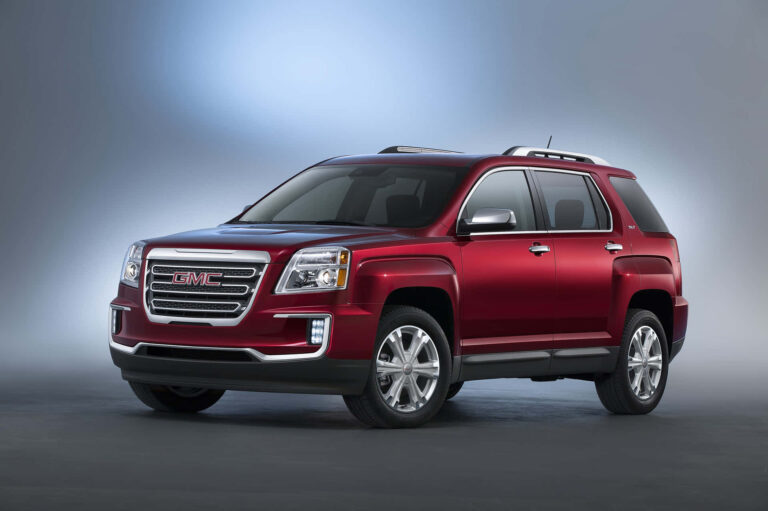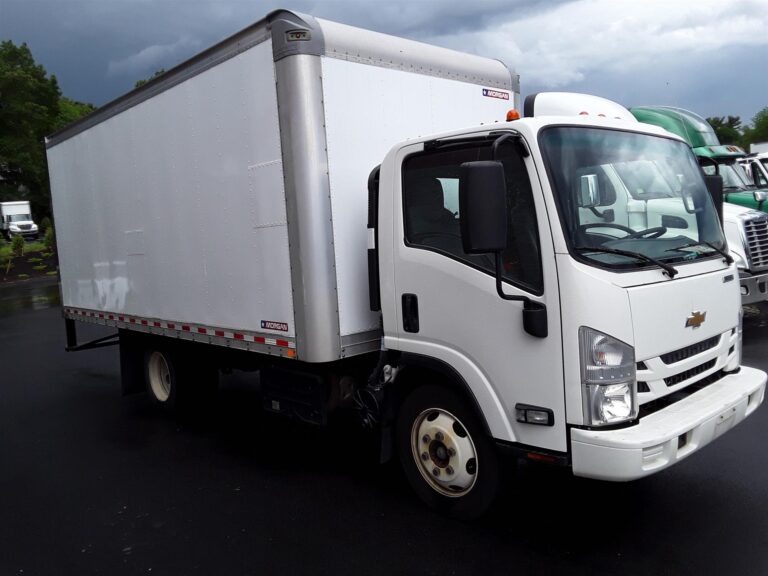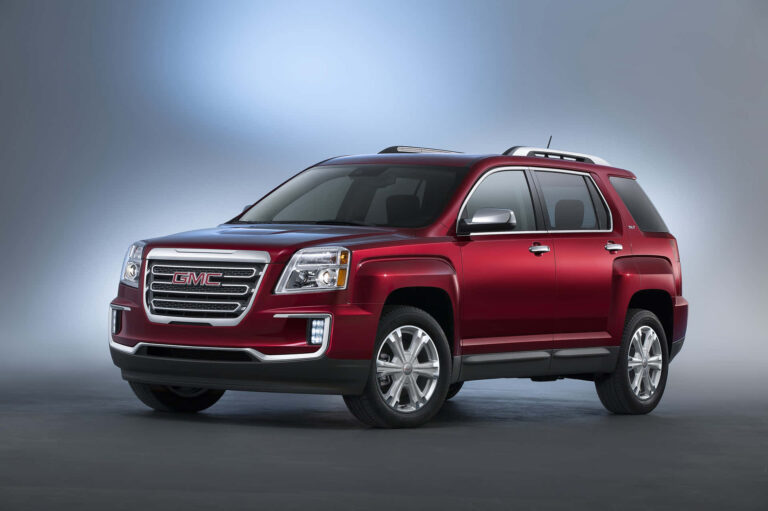1975 Chevy Trucks For Sale: Your Comprehensive Guide to Finding, Evaluating, and Owning a Square Body Legend
1975 Chevy Trucks For Sale: Your Comprehensive Guide to Finding, Evaluating, and Owning a Square Body Legend cars.truckstrend.com
The year 1975 stands as a significant marker in the history of American pickup trucks, particularly for Chevrolet. It was a pivotal year for the C/K series, affectionately known today as the "Square Body" generation (1973-1987). For enthusiasts, collectors, and those seeking a blend of rugged utility and vintage charm, 1975 Chevy trucks for sale represent more than just old vehicles; they are rolling pieces of automotive history, offering a unique driving experience and a canvas for personalization. Whether you’re looking for a reliable workhorse, a weekend cruiser, or a full-blown show truck, understanding the nuances of these iconic pickups is crucial to making an informed purchase. This comprehensive guide will walk you through everything you need to know about acquiring your own 1975 Chevy truck.
1975 Chevy Trucks For Sale: Your Comprehensive Guide to Finding, Evaluating, and Owning a Square Body Legend
The Enduring Appeal of the 1975 Chevy Truck
The third-generation C/K series, launched in 1973, broke new ground with its larger, more comfortable cab, improved ride quality, and a distinctive boxy silhouette that earned it the "Square Body" moniker. By 1975, the platform had matured, offering a wide array of configurations and proving its mettle as a durable and versatile vehicle.
What makes the 1975 model year particularly appealing? For starters, its timeless design continues to resonate with a broad audience. Unlike many vehicles of its era, the Square Body’s straightforward, muscular lines have aged gracefully, making it a favorite for custom builds, restorations, and even daily driving. Reliability is another key factor; these trucks were built with robust components designed to handle tough jobs, and their mechanical simplicity makes them relatively easy to maintain and repair for those with basic automotive knowledge. The availability of parts, both new aftermarket and used original equipment, is also a huge advantage. Furthermore, the nostalgic value is undeniable; for many, these trucks evoke memories of a simpler time, symbolizing American resilience and craftsmanship. Owning a 1975 Chevy truck isn’t just about transportation; it’s about connecting with a cultural icon.
What to Look For When Buying a 1975 Chevy Truck
Acquiring a vintage vehicle like a 1975 Chevy truck requires a discerning eye. While their robust nature means many have survived, condition can vary wildly. Here’s what to prioritize during your inspection:

Rust: This is the arch-nemesis of any classic vehicle, and Square Bodies are no exception. Pay meticulous attention to common rust spots:
- Cab Corners and Rocker Panels: These areas are highly susceptible. Check for bubbling paint, patches, or outright holes.
- Floorboards: Especially under the carpet, check for soft spots or repairs.
- Bed: Look for rust in the bed floor, inner fender wells, and around the wheel wells.
- Frame: Inspect the entire frame for structural rust, cracks, or previous repairs. Surface rust is often manageable, but deep, flaky rust is a major red flag.
- Door Bottoms and Fenders: Check the lower edges where water can collect.


Mechanical Condition:
- Engine: 1975 models offered a range of engines, including the 250 and 292 inline-sixes, and various small-block V8s (305, 350, 400). Listen for unusual noises (knocks, ticks, excessive smoke), check for fluid leaks, and ensure it starts easily. If possible, perform a compression test.
- Transmission: Check fluid levels and condition. For automatics, ensure smooth shifts without slipping or harsh engagement. For manuals, check clutch feel and gear engagement.
- Brakes: Test stopping power, pedal feel, and listen for grinding or squealing.
- Suspension and Steering: Look for worn bushings, ball joints, and tie rods. Check for excessive play in the steering wheel.
- Exhaust: 1975 was the year catalytic converters became mandatory in the U.S. Ensure the exhaust system is intact and not excessively rusted.
-
Interior:
- Dashboard: Cracks are common due to sun exposure.
- Seats: Check for tears, wear, and overall comfort.
- Gauges and Electrics: Ensure all gauges work, as do lights, wipers, and the heater/AC (if equipped).
-
Exterior:
- Paint and Body: Look for consistent paint quality, signs of previous accidents, bondo, or poor bodywork. Panel gaps should be relatively even.
- Glass and Trim: Check for cracks in windows and ensure all trim pieces are present and in good condition.
-
Documentation: A clear title is paramount. Maintenance records, if available, can provide valuable insights into the truck’s history and care.
Pro Tip: Always arrange for a pre-purchase inspection (PPI) by a trusted mechanic, ideally one familiar with vintage vehicles. This small investment can save you significant headaches and money down the road.
Types and Configurations of 1975 Chevy Trucks
The 1975 Chevy truck lineup offered an impressive variety, catering to different needs and preferences:
-
Series Designations:
- C-Series (2WD): C10 (1/2-ton), C20 (3/4-ton), C30 (1-ton). These are rear-wheel-drive models, typically used for lighter duty or cruising.
- K-Series (4WD): K10 (1/2-ton), K20 (3/4-ton), K30 (1-ton). These robust four-wheel-drive trucks are ideal for off-road adventures, heavy hauling, or challenging terrain.
-
Cab Styles:
- Regular Cab: The most common configuration, offering seating for two or three.
- Crew Cab: While less common for 1975, some heavier-duty C20/C30/K20/K30 models were available with a four-door Crew Cab, offering seating for up to six. These are highly sought after today.
- Blazer/Suburban: While technically SUVs, the K5 Blazer (two-door) and Suburban (four-door) shared the same Square Body platform and many mechanical components, making them honorary members of the family.
-
Bed Lengths:
- Short Bed: Typically 6.5 feet, popular for their sportier look and often preferred for custom builds.
- Long Bed: Approximately 8 feet, offering maximum utility for hauling and work.
-
Engine Options:
- Inline-Six: 250 cu in (4.1L) and 292 cu in (4.8L). Known for their durability and torque.
- Small-Block V8s: 305 cu in (5.0L), 350 cu in (5.7L), and 400 cu in (6.6L). The 350 V8 is arguably the most common and widely supported for aftermarket parts.
-
Trim Levels:
- Custom Deluxe: The base model.
- Scottsdale: Mid-range trim with more comfort features.
- Cheyenne: A step up, offering additional interior and exterior enhancements.
- Silverado: The top-tier luxury trim, featuring premium upholstery, chrome accents, and more amenities.
Understanding these variations will help you narrow down your search and identify the specific type of 1975 Chevy truck that best suits your needs and budget.
The Buying Process: Practical Advice and Actionable Insights
Finding your ideal 1975 Chevy truck involves more than just browsing listings. Here’s a strategic approach:
-
Define Your Purpose and Budget: Are you looking for a daily driver, a weekend cruiser, a show truck, or a restoration project? Your purpose will dictate the condition you should seek and, consequently, your budget. A pristine, restored truck will command a much higher price than a rust-riddled project. Don’t forget to factor in potential repair costs, insurance, and ongoing maintenance into your total budget.
-
Where to Look:
- Online Marketplaces: Websites like eBay Motors, ClassicCars.com, Hemmings, Bring a Trailer, and Facebook Marketplace are excellent resources. Be wary of scams and always verify sellers.
- Local Classifieds: Check local newspapers, community forums, and word-of-mouth. Sometimes the best deals are found close to home.
- Classic Car Dealerships: Reputable dealers specializing in vintage vehicles often have well-vetted inventory, but expect higher prices due to their overhead and reconditioning efforts.
- Auctions: Online and live auctions can offer great opportunities, but research the auction house and inspect the vehicle thoroughly beforehand.
- Specialized Forums and Clubs: Connect with Square Body enthusiasts online. Members often know of trucks for sale within their community.
-
Negotiation Tips:
- Do Your Homework: Research comparable sales to understand the market value for trucks in similar condition.
- Be Patient: Don’t rush into a purchase. There are always more trucks out there.
- Factor in Repairs: If the inspection reveals issues, use them as leverage during negotiation. Get quotes for repairs beforehand.
- Be Prepared to Walk Away: If the deal doesn’t feel right or the seller is unwilling to budge on unreasonable demands, be ready to move on.
-
Transportation: If the truck isn’t roadworthy, arrange for professional transport. Factor this cost into your budget, especially if buying from a distance.
Common Challenges and Solutions
Owning a vintage truck comes with its unique set of challenges, but for the 1975 Chevy, most have readily available solutions:
- Rust: As mentioned, rust is common. Solutions range from minor patch panel repairs to full body panel replacements. Many aftermarket manufacturers offer reproduction cab corners, rocker panels, fenders, and even full beds. For extensive frame rust, professional welding and reinforcement might be necessary.
- Parts Availability: One of the greatest advantages of Square Body trucks is the robust aftermarket support. Mechanical components (engine, transmission, suspension, brakes) are generally easy to find, often even at local auto parts stores. Body panels, interior trim, and exterior brightwork are also widely reproduced. N.O.S. (New Old Stock) parts can be harder to source but are often available through specialized classic truck parts dealers.
- Engine/Drivetrain Issues: If the original engine or transmission is beyond economical repair, rebuilding is a common option. Alternatively, many owners opt for modern engine swaps, such as an LS-series V8, for improved power, reliability, and fuel economy.
- Fuel Economy: Vintage trucks are not known for their fuel efficiency. Expect single-digit or low-teen MPG figures. This is simply a cost of ownership for a classic vehicle.
- Safety Features: 1975 trucks lack modern safety features like airbags, anti-lock brakes, and crumple zones. Drive defensively. Upgrades like three-point seatbelts, disc brake conversions (if not already present), and improved lighting can enhance safety.
- Emissions: 1975 was the first year for mandatory catalytic converters in the U.S. Depending on your state’s regulations, you may need to ensure the truck’s emissions system is intact and functional for registration.
1975 Chevy Truck Estimated Price Guide
Please note that prices for vintage vehicles fluctuate widely based on condition, originality, specific model (C10 short bed vs. C30 dually, 2WD vs. 4WD), engine, options, geographical location, and current market demand. This table provides a general estimate.
| Condition Category | Estimated Price Range (USD) | Description / Factors Affecting Price |
|---|---|---|
| Project / Parts Truck | $1,500 – $7,000 | Significant rust, non-running, incomplete, major mechanical issues. Requires extensive restoration. Often bought for parts or as a long-term passion project. |
| Driver Quality | $7,000 – $18,000 | Runs and drives, but may have noticeable rust, worn paint, interior flaws, and minor mechanical issues. Suitable for immediate use but needs cosmetic and mechanical attention. Great starting point for a rolling restoration. |
| Good Condition | $18,000 – $35,000 | Solid body with minimal rust, decent paint, clean interior, and reliable mechanicals. May have minor imperfections but is a presentable and enjoyable classic. Often represents a well-maintained original or an older, quality restoration. |
| Restored / Show Quality | $35,000 – $70,000+ | Near-flawless condition, professional paint, pristine interior, rebuilt or upgraded mechanicals. May feature modern upgrades (LS swap, air ride). These trucks are typically ready for car shows and command top dollar. Rare configurations (Crew Cab, K-series short beds) can exceed this. |
Frequently Asked Questions (FAQ)
Q1: Are parts hard to find for a 1975 Chevy truck?
A1: No, quite the opposite. Due to the popularity and long production run of the Square Body generation, aftermarket support is excellent. Most mechanical and many body/trim parts are readily available.
Q2: What’s the best engine for a 1975 Chevy truck?
A2: The 350 cubic inch (5.7L) small-block V8 is often considered the best balance of power, reliability, and parts availability. It’s highly customizable and has a vast aftermarket.
Q3: How much does it cost to restore a 1975 Chevy truck?
A3: Restoration costs vary significantly. A full, professional, frame-off restoration can easily range from $30,000 to $80,000+, depending on the extent of work, desired quality, and hourly labor rates. A DIY restoration can be much cheaper, but still requires significant investment in parts.
Q4: Is a 1975 Chevy truck a good daily driver?
A4: It can be, especially if well-maintained or lightly restored. However, be prepared for lower fuel economy, a less refined ride than modern vehicles, and a lack of modern safety features. Many owners perform modern upgrades (brakes, power steering, AC, engine swaps) to enhance daily drivability.
Q5: What’s the difference between C10 and K10?
A5: The ‘C’ in C10 denotes a two-wheel-drive (2WD) truck, while the ‘K’ in K10 signifies a four-wheel-drive (4WD) truck. Both are 1/2-ton capacity, but the K10 is built for off-road and heavy-duty traction.
Q6: Are 1975 Chevy trucks reliable?
A6: Yes, they are generally very reliable, especially for their age. Their simple, robust mechanical designs mean they can withstand significant mileage and abuse if properly maintained. The key is finding one that hasn’t been neglected.
Conclusion
The allure of 1975 Chevy trucks for sale lies in their powerful blend of vintage aesthetics, practical utility, and nostalgic appeal. These Square Body legends offer a tangible connection to automotive history, representing a golden era of American truck manufacturing. Whether you’re seeking a rugged work companion, a stylish cruiser, or a rewarding restoration project, the journey of finding, evaluating, and ultimately owning one of these iconic pickups is an experience in itself. With careful research, a thorough inspection, and a clear understanding of your goals, you can join the growing community of enthusiasts who proudly drive and cherish these timeless machines. More than just a vehicle, a 1975 Chevy truck is a statement, a passion, and a piece of Americana that continues to capture hearts on the open road.






